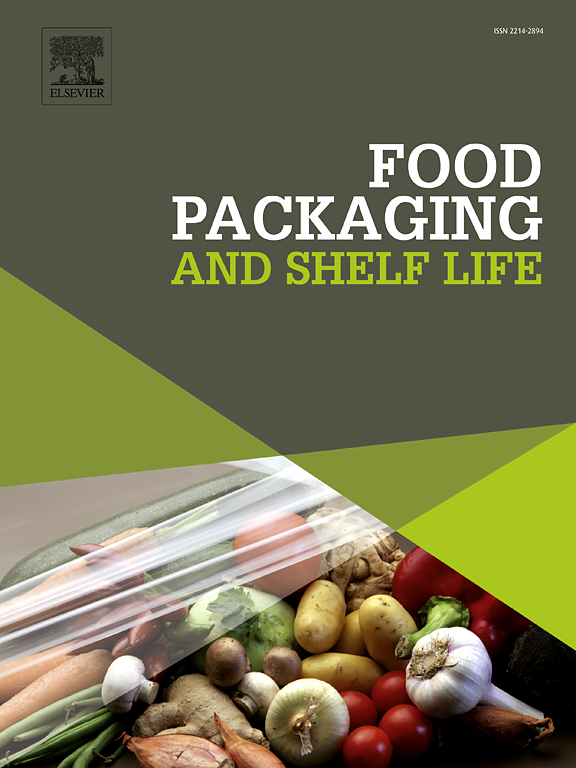Kraftliner paper coated with cationic starch/glycerol and poly(vinyl alcohol) blends to generate water vapor and O2 barriers
IF 8.5
1区 农林科学
Q1 FOOD SCIENCE & TECHNOLOGY
引用次数: 0
Abstract
This work aimed to evaluate blend formulations with cationic starch/glycerol and poly(vinyl alcohol) for applications as a kraftliner paper coating. Blends of both polymers in 5 different proportions were tested in formulations. Uncoated kraftliner paper and double wet-and-dry paper were used as controls. The formulations were applied in two layers of 15.0 ± 0.5 g/m² on 86 ± 1 g/m² paper with a coating machine. Suspension characterization and the physical properties of the coated papers were evaluated, as well as the barrier to water, water vapor, oxygen, and oil/grease, scanning electron microscopy, and Fourier transform infrared spectroscopy following standard methods. The papers coated with cationic starch showed low water resistance. However, the blends formed with poly(vinyl alcohol) presented oxygen and water vapor barriers, reaching values lower than 10 cm³ (STP)/(m².day) and 586 ± 23 g/m².day, respectively. Combining materials can improve the barrier properties of coated papers to create biodegradable and renewable formulations, promoting sustainable packaging.
牛皮纸涂布阳离子淀粉/甘油和聚乙烯醇混合物,产生水蒸气和氧气屏障
本工作旨在评价阳离子淀粉/甘油和聚乙烯醇的共混配方,用于牛皮纸涂布。两种聚合物以5种不同比例的共混物在配方中进行了测试。以未涂布牛皮纸和双干湿纸为对照。采用涂布机在86 ± 1 g/m²的纸张上涂布两层,涂布面积为15.0 ± 0.5 g/m²。根据标准方法评估了涂层纸的悬浮液特性和物理性能,以及对水、水蒸气、氧气和油脂的阻隔性,扫描电子显微镜和傅里叶变换红外光谱。涂有阳离子淀粉的纸张具有较低的耐水性。然而,与聚乙烯醇形成的共混物具有氧气和水蒸气屏障,其值低于10 cm³ (STP)/(m².day)和586 ± 23 g/m²。天,分别。结合材料可以改善涂布纸的阻隔性能,创造可生物降解和可再生的配方,促进可持续包装。
本文章由计算机程序翻译,如有差异,请以英文原文为准。
求助全文
约1分钟内获得全文
求助全文
来源期刊

Food Packaging and Shelf Life
Agricultural and Biological Sciences-Food Science
CiteScore
14.00
自引率
8.80%
发文量
214
审稿时长
70 days
期刊介绍:
Food packaging is crucial for preserving food integrity throughout the distribution chain. It safeguards against contamination by physical, chemical, and biological agents, ensuring the safety and quality of processed foods. The evolution of novel food packaging, including modified atmosphere and active packaging, has extended shelf life, enhancing convenience for consumers. Shelf life, the duration a perishable item remains suitable for sale, use, or consumption, is intricately linked with food packaging, emphasizing its role in maintaining product quality and safety.
 求助内容:
求助内容: 应助结果提醒方式:
应助结果提醒方式:


